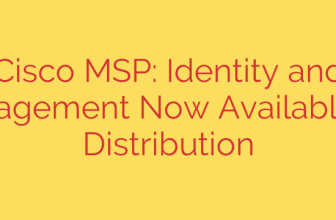
Is Your Security Truly Working? How AI-Powered Breach and Attack Simulation is Changing the Game
In today’s complex digital landscape, simply deploying security tools is no longer enough. The critical question every security leader must ask is not “Are we protected?” but rather, “How do we know our protections are working effectively against real-world threats?” The traditional answer—periodic penetration tests and vulnerability scans—provides only a snapshot in time, leaving dangerous gaps in a rapidly evolving threat environment.
This is where Breach and Attack Simulation (BAS) emerges as a transformative approach. And now, supercharged with Artificial Intelligence (AI), it is redefining the very foundation of security validation.
Beyond the Snapshot: Understanding Breach and Attack Simulation
At its core, Breach and Attack Simulation (BAS) is an advanced security testing method that continuously and automatically simulates the full spectrum of attack tactics, techniques, and procedures (TTPs) used by malicious actors. Unlike a traditional penetration test, which is a point-in-time human-driven exercise, a BAS platform operates 24/7, acting like an automated, persistent red team.
The goal is simple yet profound: to proactively identify weaknesses and gaps in your security controls before a real attacker can exploit them. By safely launching simulated attacks against your production environment, you can see exactly where your defenses—from firewalls and endpoint detection to email gateways—might fail.
The AI Advantage: Making Security Validation Smarter and More Proactive
Integrating Artificial Intelligence and Machine Learning (ML) into BAS platforms elevates this process from a series of scripted tests to a dynamic, intelligent, and predictive security strategy. Here’s how AI is making the difference:
Dynamic and Adaptive Threat Simulation: AI-powered BAS doesn’t just run through a static library of attacks. It learns from global threat intelligence and your organization’s unique environment to create realistic and evolving attack scenarios. It can mimic the decision-making of a human attacker, pivoting and adapting its approach based on the defensive responses it encounters. This provides a far more accurate test of your security posture.
Intelligent Risk Prioritization: One of the biggest challenges for security teams is alert fatigue and knowing what to fix first. An AI-driven BAS platform analyzes the results of its simulations and automatically prioritizes vulnerabilities. By correlating attack paths with the value of targeted assets, AI helps you focus on the most critical risks that pose a genuine threat to your business operations.
Automated Remediation Guidance: Finding a problem is only half the battle. AI-powered BAS goes a step further by providing actionable, context-aware remediation advice. It can pinpoint the exact misconfiguration in a firewall rule or suggest specific policy changes needed to close a security gap, dramatically reducing the time from detection to resolution.
Continuous Security Posture Management: The “always-on” nature of AI-driven BAS means your security validation is never out of date. It continuously tests your defenses against the latest threats cataloged in frameworks like MITRE ATT&CK®, ensuring that new vulnerabilities or misconfigurations are discovered almost as soon as they appear.
Key Benefits of Adopting an AI-Driven BAS Strategy
Implementing an AI-powered Breach and Attack Simulation platform offers tangible advantages that directly strengthen an organization’s cyber resilience.
Shift from Reactive to Proactive Defense: Stop waiting for an incident to occur. BAS allows you to continuously hunt for weaknesses and fix them on your own terms, keeping you consistently ahead of attackers.
Maximize Your Security ROI: Your organization has invested heavily in a diverse security stack. AI-powered BAS validates that these tools are configured correctly and performing as expected, ensuring you get the maximum return on your security investments. It identifies redundant tools and highlights configuration drift that could render expensive technology ineffective.
Achieve Data-Driven Security Governance: Move beyond assumptions and guesswork. BAS provides empirical, data-backed evidence of your security effectiveness. This enables you to generate clear reports for stakeholders, justify security budgets, and demonstrate compliance with regulatory requirements.
Drastically Reduce the Attacker’s Dwell Time: By continuously identifying and closing exploitable pathways, you shrink the potential attack surface. This makes it significantly harder for malicious actors to gain a foothold and move laterally within your network, effectively minimizing their potential impact.
Actionable Security Tips for Implementation
Ready to explore the power of AI-powered BAS? Here are a few steps to get started:
- Identify Your Crown Jewels: Begin by mapping out your most critical assets and data. This will help you focus the initial simulations on protecting what matters most.
- Align with Threat Intelligence: Choose a BAS platform that integrates with leading threat intelligence feeds and aligns its simulations with the MITRE ATT&CK® framework. This ensures you are testing against the most relevant and current real-world threats.
- Integrate with Your Security Ecosystem: To maximize value, ensure the BAS platform can integrate with your existing Security Information and Event Management (SIEM) and Security Orchestration, Automation, and Response (SOAR) tools to streamline the remediation process.
- Start Small and Scale: Begin by running simulations in a contained but representative part of your network. Use the initial findings to demonstrate value and build a business case for broader deployment across the enterprise.
In the modern era of cybersecurity, hope is not a strategy. AI-powered Breach and Attack Simulation provides the continuous, evidence-based assurance needed to confidently navigate an increasingly hostile threat landscape. It represents a fundamental shift towards a more proactive, intelligent, and resilient security posture.
Source: https://www.bleepingcomputer.com/news/security/redefining-security-validation-with-ai-powered-breach-and-attack-simulation/








